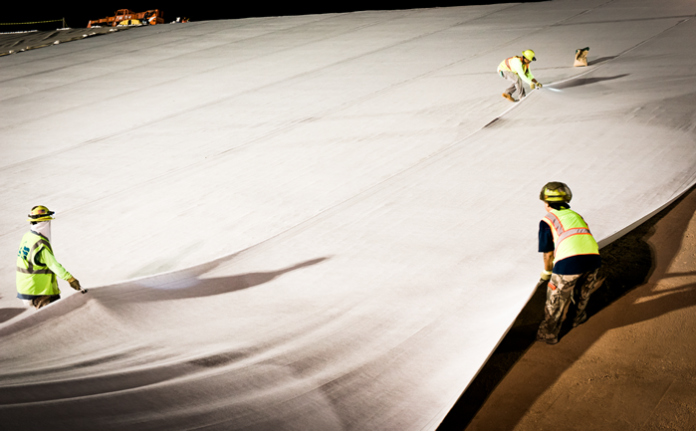Geosynthetic clay liners (GCLs) have a tremendous record as hydraulic barriers in engineered lining and capping systems. Yet, they are not well understood by the larger geotechnical design community. They require knowledge not only of geosynthetics but of sodium bentonite types, behavior, and suitability in certain applications. The four-part, free GCL webinar series from Dr. Craig Benson, Dean of the School of Engineering at the University of Virginia (UVA), has been a true highlight of the field’s intensive move into online learning during the Covid pandemic.
Benson is one of the most versed researchers in the world on GCLs and particularly in regards to bentonite and bentonite-polymer composites.
The GCL webinar series comes to a close 4 August 2021 with a focus on “Practical Lessons Learned from GCL Case Histories.” UVA will award a certificate worth 1.5 PDH to attendees of the live presentation. Solmax continues to serve as the series sponsor.
GCL WEBINAR SERIES, PART 4
Benson’s presentations have been particularly notable for a strong focus on GCL use in “aggressive conditions” and chemical compatibility.
The previous three installments are available on YouTube, via Solmax:
- Fundamentals of GCLs as Hydraulic Barriers
- Bentonite-Polymer Composite GCLs for Aggressive Conditions
- Principles and Procedures for Evaluating GCL Chemical Compatibility
In Part 4, three case histories will be featured. Two of them will reveal how unintended outcomes occurred due to a misunderstanding of physical and geochemical interactions, oversights in design, or inadequate specifications. The third case history will show how a laminated GCL was used and how it has functioned exceptionally well.
Details on the case histories, via Solmax:
- In Case History 1, the GCL was used alone in a final cover (not overlain by a geomembrane). Wet-dry cycling combined with cation exchange altered the GCL significantly, leading to much higher percolation rates than anticipated.
- In Case History 2, the GCL was used in a composite liner for a landfill consisting of a high density polyethylene geomembrane over a needle-punched GCL. Due to a downturn in economic conditions, the leachate collection system and waste were not placed over the composite liner, allowing the liner to remain exposed. Examination of the GCL after ten years of exposure demonstrated that the GCL was much more permeable than anticipated after exposure, and had experienced significant internal erosion.
- In Case History 3, a laminated GCL (or GCLL) is being used in a final cover at a high-elevation mine site. The GCLL has functioned exceptionally well, with percolation rates typically less than 3 mm/yr, demonstrating the efficacy of a GCL-only solution. In each of these cases, careful attention to basic principles and design details would have (Case Histories 1 and 2) or have (Case History 3) led to a highly successful outcome.
Learn more about Solmax
Learn more about the University of Virginia College of Engineering












